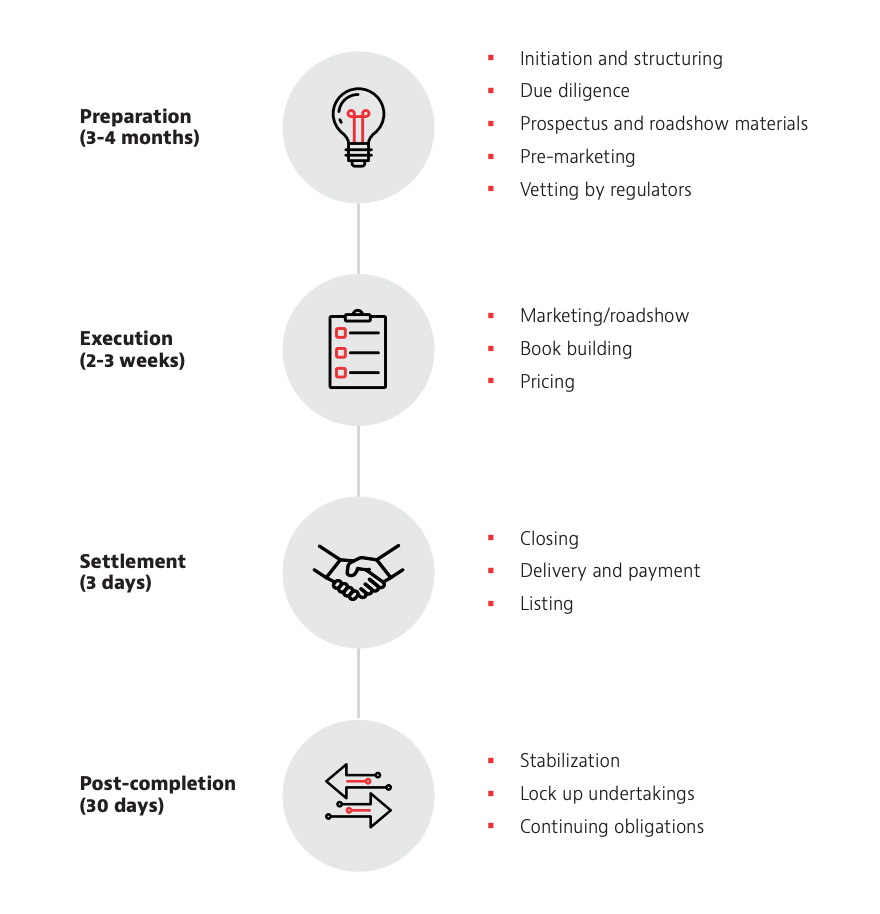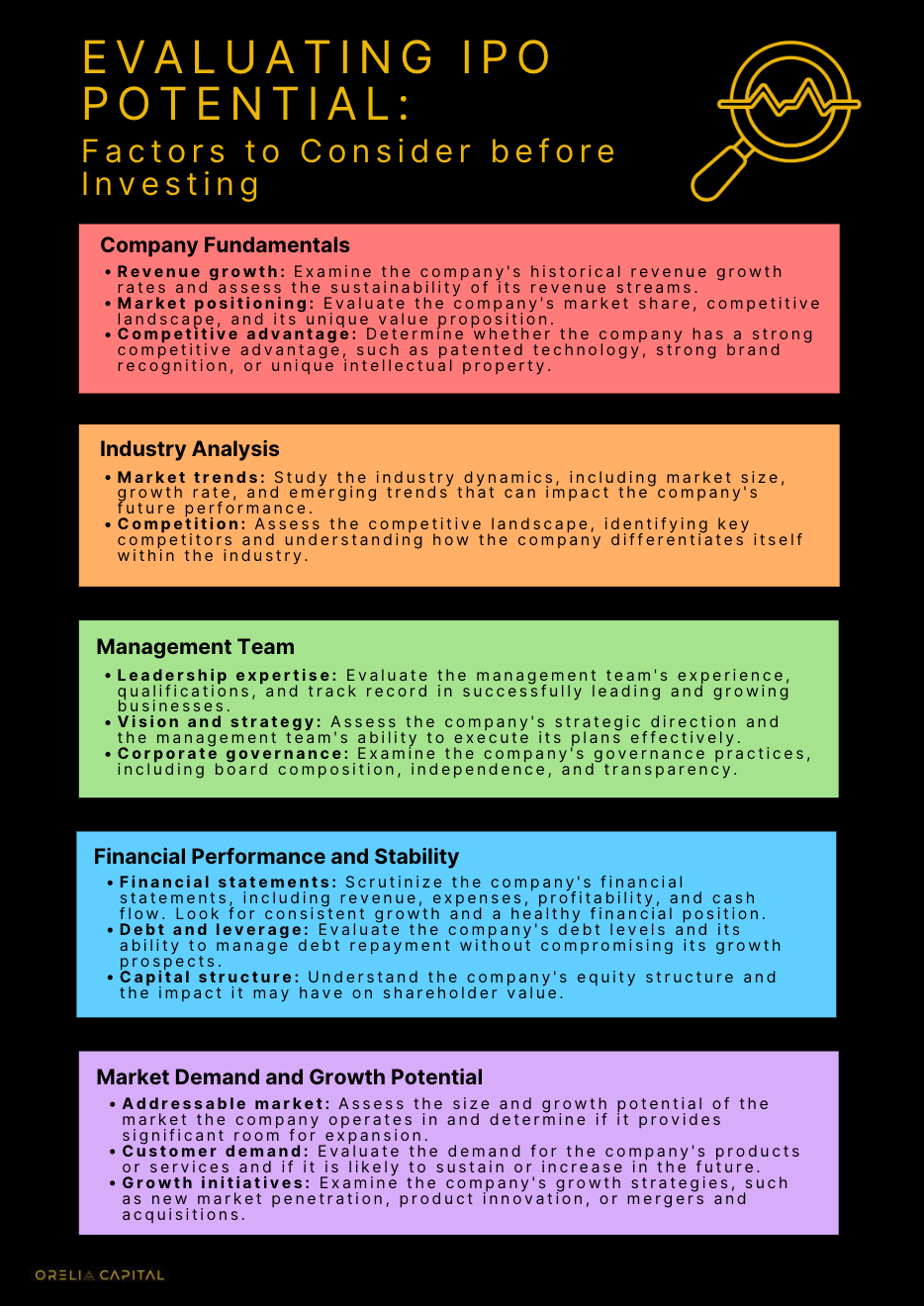Demystifying IPOs: A Comprehensive Guide to Initial Public Offerings

Introduction:
Initial Public Offerings (IPOs) can be exciting and complex for investors and companies alike. This article will delve into the world of IPOs, breaking down the process and exploring the various considerations involved. Whether you are seeking to understand IPOs or looking to invest in them, this comprehensive guide will provide you with valuable insights and strategies for success.
Understanding IPOs:
What is an IPO, and How Does It Work?
- IPO defined: An initial public offering (IPO) is the process by which a privately-held company offers its shares to the public for the first time, allowing it to become a publicly-traded company. By going public, the company offers ownership stakes to investors in exchange for capital, which can be used for various purposes such as expansion, acquisitions, or debt repayment.
- Transition from private to public: Prior to an IPO, a company is typically owned by its founders, early investors, and possibly venture capitalists. Going public involves several steps, including selecting investment banks to manage the offering, preparing necessary financial disclosures, and obtaining regulatory approvals.
- Primary vs. secondary offering: In an IPO, a primary offering occurs when the company issues new shares to raise capital directly. Investors purchase these newly issued shares during the IPO. On the other hand, a secondary offering involves existing shareholders, such as founders or early investors, selling their shares to the public. The proceeds from the secondary offering go to the selling shareholders, not the company.
Key Players in an IPO: Roles of Investment Banks, Underwriters, and Regulators
Investment Banks:
- Underwrite the IPO, assuming financial risk
- Determine IPO price and valuation
- Provide market expertise and timing advice
- Conduct due diligence and ensure accurate disclosures
- Organize roadshows and investor outreach
Underwriters:
- Assess risk and commit to underwriting
- Market and distribute IPO shares
- Engage in stabilization activities post-IPO
- Allocate shares to investors
Regulators:
- Securities and Exchange Commission (SEC) oversees IPO compliance in the US
- Listing Exchanges enforce listing requirements and fair trading practices
- Financial Industry Regulatory Authority (FINRA) regulates involved brokerage firms
The IPO Process Unveiled: Timeline, Documentation, and Securities Regulations

Investing in IPOs:
Analyzing IPO Prospectuses: Unraveling Financials, Risks, and Market Strategies
Financial Disclosures:
- Evaluate revenue growth, cost structure, and profitability ratios.
- Analyze cash flow and working capital to gauge financial health.
Risk Factors:
- Identify business, legal, and market risks disclosed in the prospectus.
- Assess the potential impact on the company's performance and operations.
Market Strategies:
- Understand the company's business model and competitive advantage.
- Evaluate growth plans, market penetration strategies, and distribution channels.
IPO Valuation Methods: Understanding Pricing and Assessing Fair Value
As an individual investor, you should be capable of conducting a basic valuation of the IPOs. You can use the following methods to grasp the IPO's valuation better and understand if it is overvalued or undervalued.
Valuation Techniques:
- Comparable Company Analysis (CCA): This method compares the IPO company's financial metrics (revenue, earnings, and growth rates) to similar publicly-traded companies in the same industry. By assessing valuation multiples like the price-to-earnings (P/E) ratio, price-to-sales (P/S) ratio, or enterprise value-to-EBITDA (EV/EBITDA) ratio, investors can gauge the relative value of the IPO company.
- Price-to-Earnings (P/E) Ratio: The P/E ratio is a widely used valuation metric. It compares the price per share of a company to its earnings per share (EPS). A higher P/E ratio suggests that investors are willing to pay a premium for the company's expected future earnings growth. Conversely, a lower P/E ratio may indicate the company is undervalued compared to its earnings potential. It is crucial to compare the IPO company's P/E ratio to industry peers and historical averages for context.
Other Considerations:
- Growth Potential: Evaluating the IPO company's growth potential is essential. Companies with solid growth prospects may justify higher valuations, while those with uncertain growth trajectories may carry more risk.
- Market Conditions: Investor sentiment and market conditions can influence IPO pricing. IPOs may be priced more aggressively in bullish markets, while prices may be conservative in bearish markets.

Mitigating Risks in IPO Investments: Diversification, Due Diligence, and Long-Term Planning
Investing in IPOs can be an exciting opportunity, but it's essential to approach it cautiously and focus on risk management. Here are key strategies to mitigate risks when investing in IPOs:
- Diversification: Diversification is a fundamental principle of investing that applies to IPOs as well. By spreading your investments across different IPOs and asset classes, you can reduce the impact of any single IPO's performance on your overall portfolio and reduce the risk of your investments.
- Due Diligence: Thorough due diligence is crucial before investing in an IPO. It involves extensive research and analysis to evaluate the company's fundamentals, market potential, competitive landscape, and management team.
- Long-Term Perspective: Investing in IPOs requires a long-term perspective. Some IPOs may experience significant initial price jumps and short-term volatility. Develop an investment plan that aligns with your financial goals and risk tolerance. Focus on companies with sustainable business models, substantial competitive advantages, and robust growth prospects. Emphasize long-term value creation and avoid being swayed by short-term market fluctuations.
Conclusion:
By demystifying IPOs and offering insights into understanding and investing in them, this comprehensive guide equips readers with the knowledge and tools necessary to navigate the world of initial public offerings. Remember, thorough research, careful evaluation, and long-term planning are essential for successful IPO investments.

We hope you enjoyed this edition of our newsletter. If you found it helpful, please consider sharing it with others who might benefit from this information.
At Orelia Capital, we believe that feedback is a gift. Your feedback can help us improve our content and provide more value to our readers.





